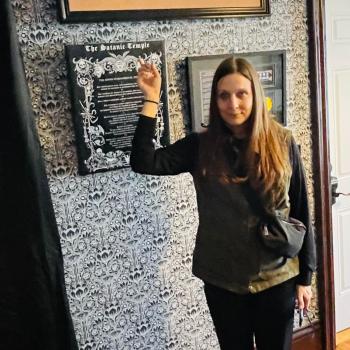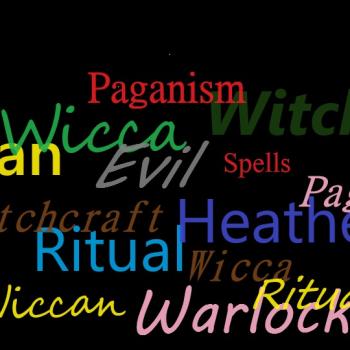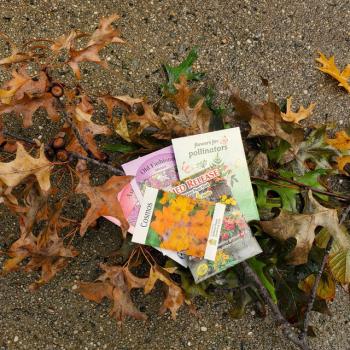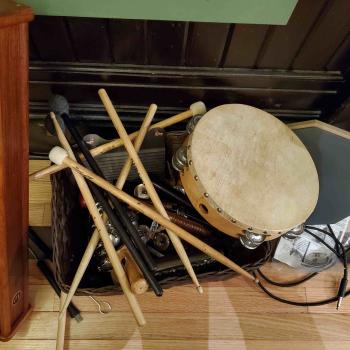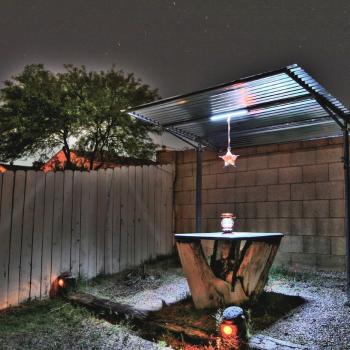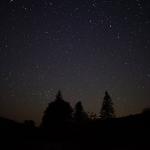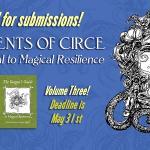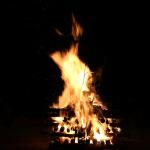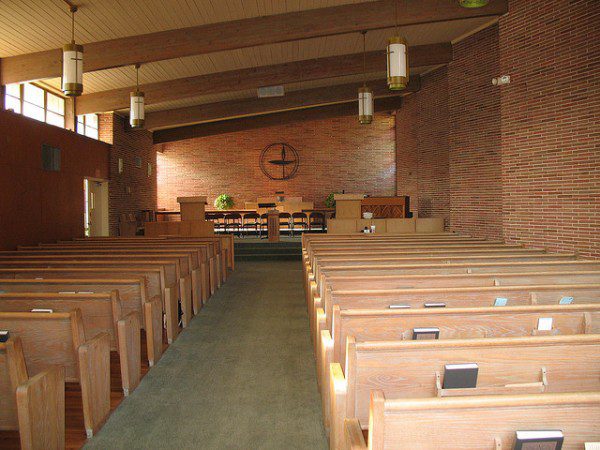
As a UU minister who is also a Pagan, I find myself fairly regularly trying to create Pagan-themed worship for UU Sunday morning services. This can be quite a challenge.
Unitarian Universalist congregations have inherited our worship template from Protestant Christianity. We have amended it quite a bit by, for example, dramatically expanding the sources for readings, altering the words to hymns, and preaching thematically rather than basing the sermon on a particular biblical text. However, the basic form remains in many UU congregations. Opening, readings, hymns, sermon, offering, closing, although not necessarily in that order.
The Pagan worship tradition is dramatically different. Of course, there are many forms of Pagan celebration, but I have never been to a Pagan service that centered on a sermon. Rather, Pagan celebrations tend to center on some combination of story, meditation, and ritual magic.
So it can be difficult to bridge the Pagan ritual form into the UU Sunday morning worship form. I have tried various approaches to Paganizing Sunday morning, some of which have worked better than others.
Pagan-Themed Sermon
The easiest approach for me has been to simply make the sermon topical to something Pagan-themed. For me, this has usually meant using the Wiccan Wheel of the Year as inspiration, and designing a sermon that will address the spiritual topics of the season. For example, I did a service near the fall equinox a few years ago which focused on thirst as a metaphor, and I talked about the ritual sharing of the cup with the words, “May you never thirst.” Often, I will subtly change other elements of the worship service to go along with the theme, such as using a quarter call as the opening words. This method is easy for me, because it is so close to the way I prepare worship every week, so the process of putting the service together is familiar for me. It is also the format least likely to alienate anyone in the congregation, since the experience of being in the service is also so similar to every other Sunday that is not specifically focused on Pagan themes and practice. On the other hand, it is also, for me, the least satisfying option. Because it is so close to what I do every week, it feels the farthest from the experience of actual Pagan ritual. It often feels like I am holding Paganism, including my own Pagan self at arm’s length. It can feel too much like I am talking about something distant, rather than inviting the congregation into a present experience.
Shorter Sermon Plus Meditation
This is my in-between approach. Like the Pagan-Themed Sermon approach, I often include quarter calls as the opening words, and other ways of bringing Pagan elements into the UU structure. However, in this version, I change the structure a bit more. I usually shorten the sermon, though it is still present. The shorter sermon gives me a little more time to play with, and with that extra time, I create a guided meditation experience. My Pagan spiritual training has been through the Temple of Witchcraft, which often uses guided meditations and journey work in both solitary and group ritual, so this is somewhat familiar to me as a form. I work to make these mediations as accessible as I can to the congregation, which means, for example, that they usually don’t include contact with deities. Rather, they are grounded in a vision experience of the natural world, and the entities encountered, if any, are usually plants and animals. This method requires more changes to the usual order of service, and that, in turn, requires more of the congregation in terms of willingness to engage a bit out of the Sunday morning comfort zone. But I have usually found most people are willing to participate in this kind of meditation, and often people in the congregation who are not Pagan report that the experience was meaningful to them, which is great. I also find these services more satisfying, as I feel that I have honored my Pagan tradition more fully, and given people a real experience.
Ritual as the Center
And then there are services where I actually try to make a ritual the center of the service. In my current congregation, we do this most often around Samhain, in a Day of the Dead ritual which honors departed loved ones. In a previous congregation, we did this most often at the Winter Solstice, in which we enacted a ritual drama. I have learned that this style of worship is much easier to do in an intergenerational worship setting, in other words, when kids are invited to be present. There is something about the presence of children that makes adults more willing to engage in rituals in worship. I think the presence of children brings out the child in some adults. It also gives people who might be a little shy a bit of cover – I’m doing this because it’s important to the kids. I have found it is still important to have touch stones of the regular Sunday morning routine built into the service so that people have something familiar and comforting in the midst of a service that will feel very different from the usual. This helps everyone be comfortable enough to really engage in the ritual. These services are the most likely to get some push-back from members of the congregation for whom this is too far from their own practice and theology for comfort. However, I have actually often gotten very positive feedback from people who aren’t Pagan when the rituals are crafted in a way that includes a variety of theological viewpoints. Personally, I find these services satisfying, too, like the ones with meditations. In both cases, I feel like I really am honoring the Pagan side of my practice in my UU community.
I hope these approaches might help if you are ever asked to lead Pagan-themed worship for a UU congregation on Sunday morning.




